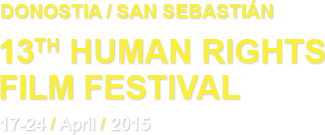- Home
- Topics
- All topics
- Drones: machines for good and/or evil?
Drones: machines for good and/or evil?
Unmanned aerial vehicles (drones) could become part of our everyday lives in only a few years. Despite the restrictive nature of the measures and regulations introduced around the commercial and professional use made of drones, we can certainly say that changes are obviously afoot in our airspace.
These devices were used for military purposes prior to their incorporation to civilian life. Ever since the 9/11 attacks of 2001 in New York, the Pentagon and the CIA have used drones for anti-terrorist operations in countries such as Yemen, Iraq, Libya, Somalia, Afghanistan and Pakistan.
The journalist Roberto Montoya, author of the book Drones. La muerte por control remoto ("Drones. Death by Remote Control") points out that while during the Bush era (from 2001 to January 2009) there were 50 lethal drone attacks, the figure rose sharply when Barack Obama took up office: only three days after arriving to power, on 23 January 2009, he ordered the first attack on Pakistan, killing a man suspected of belonging to Al-Qaeda and some fifteen civilians with him. Since then, he assures us that around 400 operations are accounted for which have caused almost 5,000 victims. Only 1.5 or 2% were truly kingpins, while the others were militia fighters, often peasants recruited by force, in addition to around 1,000 civilian victims.
Most of the attacks have taken place in North Waziristan (Pakistan) a tribal area on the border with Afghanistan used as a refuge by the Taliban and members of Al-Qaeda since 2001. Although some of its areas serve as bases for insurgency operations, 840,000 civilians live in the area under constant threat from armed groups such as the Pakistan Army and US drones, according to a 2013 Amnesty International report, which raises the alarm on the rising number of attacks.
Those who “pilot” these unmanned drones set their sights on, shoot and kill their targets from distances thousands of miles away. Often they are video game experts who turn their Play Station games into reality. And just like in a game, those who perform these actions lose conscience of the harm they cause due to the distance and “game” simulation mode conveyed by the programs used by these devices.
Since their military development, drones seem to be here to stay. A whole variety of activities and spheres could benefit from this new technology: research & development, fire extinction, agriculture, observation and surveillance, advertising and the media, cinema and emergency, search and rescue work. Among the most common functions of drones is their use for surveillance purposes. Several European police departments already have these devices which have been used, for example, to fly over and protect the 2013 G8 summit in Northern Ireland.
The technology of these devices has developed rapidly and their costs too have dropped at enormous speed, making them accessible to the general public. However, privacy laws are not sufficiently tangible to assure their responsible use.
In view of the situation, in Spain, and given the legal limbo affecting their use, in July 2014 the Council of Ministers approved a provisional regulatory framework for drone operations. Among other aspects, the regulation envisages the different scenarios in which these artefacts can be used, depending on the weight of the aircraft. Until approval of the final regulation, permitted operations will be limited to uncontrolled airspace and unpopulated areas.
Meanwhile, companies such as the Spanish Post Office and Amazon have already announced their intention to use drones to deliver packages within the next few years.
For its part, the Government of the United States has published information on new regulations that will extend their business use and export for military purposes. Following the period of public debate, which is not expected to end until at least late 2017 before it can become law, in three years more than 7,000 companies will obtain authorisation to fly drones in the USA. In the Basque Country some 30 companies, associations and educational institutions are already working on the development of and applications for the contraption.
However, the innovative use of drones in civilian life, in addition to representing progress and bringing a certain amount of benefit as regards speed and accessibility to places of difficult entry, also involves a great deal of unknown factors and fears related to safety, not to mention the responsibility and intentions of those who use them.
At the end of the day, does the use of these devices endanger the intimacy and privacy of people? How will we react to the perception that we are feeling watched by these “new eyes”, with zoom lenses and sensors that can see perfectly clearly in the dark?
Thus opens a debate on the benefits and advances of new technologies and their responsibility and ethical use.
Film: Drone









